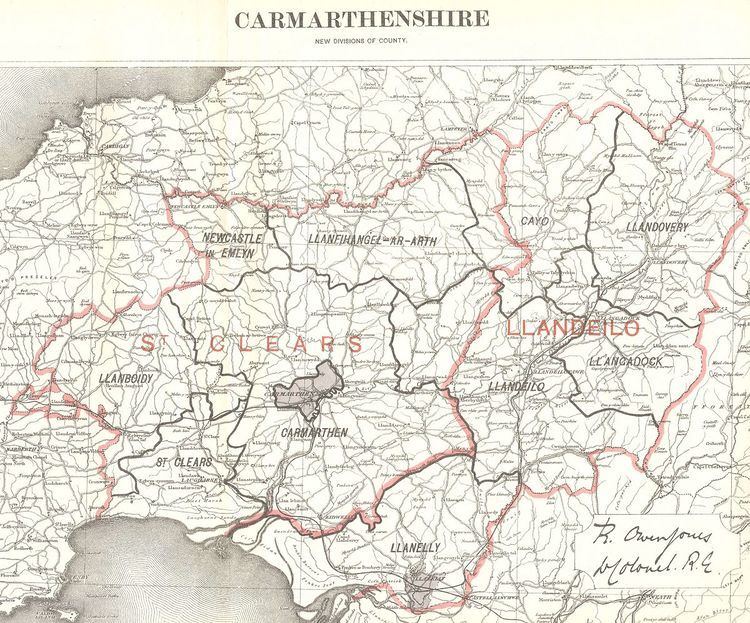Preserved county Dyfed Number of members 1 | Type of constituency Borough constituency | |
 | ||
Major settlements Carmarthen, Ammanford, Llandeilo Replaced by Carmarthen East and Dinefwr, Carmarthen West and South Pembrokeshire | ||
Carmarthen (Welsh: Caerfyrddin) was the name of a parliamentary constituency in Wales which returned one Member of Parliament to the House of Commons of the Parliament of the United Kingdom between 1542 and 1997. At its abolition in 1997 it was replaced, partly by the new Carmarthen East and Dinefwr constituency and partly by Carmarthen West and South Pembrokeshire.
Contents
History
Because the seat contained mining areas in the valley of the River Gwendraeth (until the 1980s), much countryside and a high proportion of Welsh speakers, it was fertile territory for the Labour Party, the Conservatives and Plaid Cymru alike. Although the Conservatives never won the seat, they came within 1200 votes of doing so in 1983.
Carmarthen is notable as the first constituency to elect a Plaid Cymru MP, Gwynfor Evans, at a 1966 by-election. Evans was later involved in one of the closest General Election results ever in February 1974, when he lost to the Labour candidate by only three votes. The constituency also shot to fame in the following election in October 1974 as the only seat in the country to see its turnout rise on that of February 1974.
Boundaries
Until 1832, it was a borough constituency consisting of the town of Carmarthen. Between 1832 and 1918 it was a district of boroughs constituency, consisting of Carmarthen itself and Llanelli, and was sometimes called "The Carmarthen Boroughs".
In 1918, the borough was abolished, but the name was transferred to one of the divisions of the county of Carmarthenshire. The constituency was made up of the whole of the county of Carmarthenshire except for the urban area around Llanelli. Notable towns were Carmarthen itself, Ammanford and Llandeilo.
In 1997, the Boundary Commission for Wales recommended an extra seat for Dyfed. This led to the seat being split two to one between Carmarthen East & Dinefwr and Carmarthen West & South Pembrokeshire.
Elections in the 1890s
Elections in the 1910s
General Election December 1910 Liberal: William Llewelyn Williams elected unopposed.
General Election 1918 Liberal: John Hinds elected unopposed.
Elections in the 1940s
Carmarthen by-election, 1941 Labour: Moelwyn Hughes elected unopposed.
